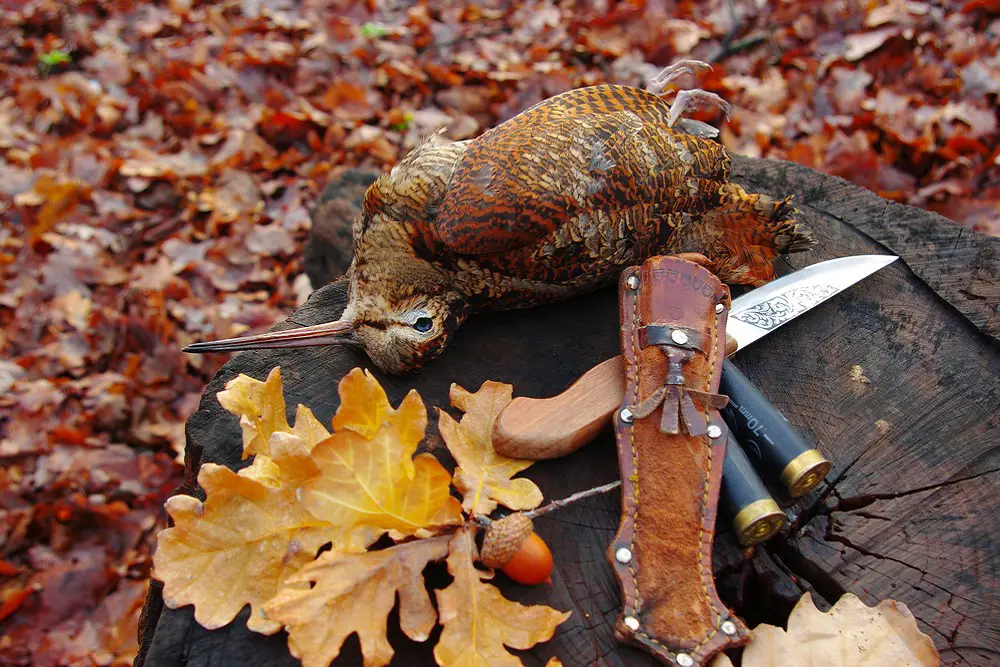
There is probably no more important tool in the outdoors than the knife. Not only for skinning but for a variety of tasks that may crop up from time to time. Unfortunately, the best hunting knives are probably the most contentious and argued topic on the internet.
At A Glance: Our Top 5 Picks for Hunting Knives
- Great Quality: ESEE
- Very Durable: Cold Steel
- Most Affordable: Morakniv
- Buck Knives
- Gerber
Finding solid information on what to look for in a hunting knife is incredibly difficult. Especially with the constant bickering about every facet of their construction. The goal of this article is to provide concise information strengths and weaknesses of the various parts of a knife. Hopefully, this will make selection somewhat easier.
I would also recommend some knives of varying styles and uses that should be able to cover any need you may have. Not every knife will work for every person but at least one of the knives should do nearly everything you could need.
While we endeavor to provide you with the best knives possible, we do have to restrict this to production knives. There are many amazing custom knife makers but most of their knives are out of the price range of many people. Even getting your hands on one can be tough!
Top 5 Best Hunting Knives (Summary)
For more detailed and complete product reviews on benefits and features, keep reading.
Choosing a Knife for Big-Game Hunting
From the first stone knives to today’s super-steels, knives have been the go-to tool for everyday tasks around the world. It’s amazing that such a simple item could be so complex. There are so many factors to consider that can be combined in such variety. This makes each knife unique.
Each feature will have some effect on how well the knife performs different tasks.
1. Blade Length
One of the most heated topics in knives is how much blade you need. What you plan to do with the knife will ultimately decide what length will suit you best. Bigger is not always better, sometimes a short blade will do more than a long blade.
For ease of understanding, I break knives down into less than 4 inches, 4 to 6 inches, and greater than 6 inches. The smallest will usually be folding knives, the medium and long knives are all fixed blades.
Knives with less than a 4” blade are fine for skinning and even butchering. I have butchered and jointed many deer with a 3 and a half inch pocket knife. This doesn’t mean they are best for that job. You can do some small tasks with these small blades but for larger tasks or bigger game, you need a bigger knife.
The medium sized knives in the 4-6 inch range are perfect all around knives. They skin decently, can do a variety of camp or woodcraft tasks, and are able to butcher even large game. Most of these knives are not specific to any task so they don’t excel at any task but they are capable of most tasks.
Large knives greater than 6 inches are usually the best knives for efficient butchering. They also perform camp or woodcraft tasks adequately. Fine tasks like skinning small game can be difficult with these knives. Historically speaking, most trappers and hunters carried knives of this length.
2. Blade Geometry
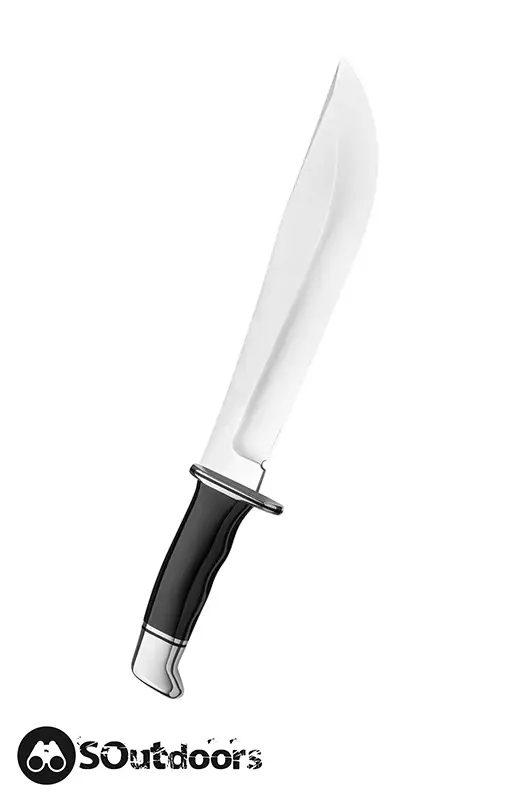
This covers two points, the tip of the blade and how the blade is ground. For skinning and a variety of light tasks, your point geometry is very important. For any cutting tasks as well as for ease of sharpening, the blade grind can have a huge effect.
Tip geometry has been leaning more toward the drop point for the last few years. This is an effective point for skinning and other daily tasks.
Some knives still stick to the clipped point design which is an overall sharper point but can be weaker overall. The same is true of the skinning point on classic skinning knives. Both of these penetrate even thick-skinned animals well but caution must be taken not to pierce internal organs.
Most blades on hunting knives are flat ground or hollow ground. This provides the least amount of cutting friction with the easiest sharpening. They have a small false edge that can be honed easily.
Some knives are trending toward Scandinavian grinds. These are harder to sharpen with a longer primary bevel but have a very strong edge that stays sharp longer.
3. Knife Steel
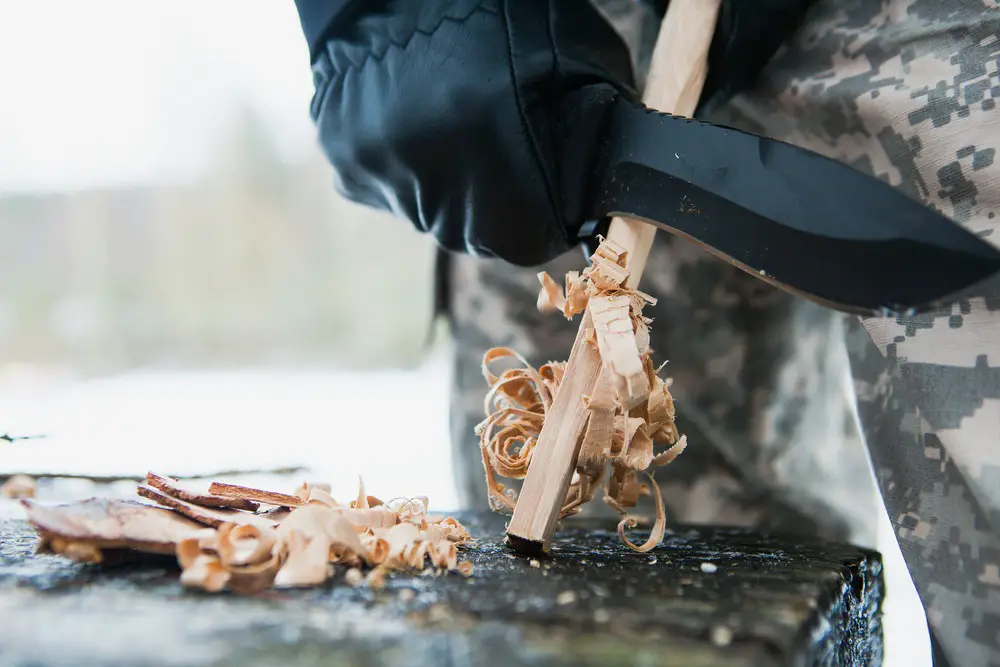
This is the single most debated topic in the history of knives. There are a huge variety of steels that have different edge retention and edge holding abilities. Some of the steels are very hard to sharpen while some don’t stay sharp for very long.
Rather than try to cover every knife steel, generally, if you buy a quality knife, it will have decent steel. Most of these steels will suit most users well. Modern super-steels are very nice but are overkill for those who use their knives sparingly.
You can break steels down into two categories: Carbon and Stainless. Carbon steel knives are usually easier to sharpen and hold an edge longer but rust easier. Stainless stills will rust but are not as likely to. They are harder to sharpen well and usually don’t hold an edge as long.
Some good steels to look for are:
- High Carbon: 1095, 1080, 1075
- Spring Steel: 5160
- Tool Steels: 52100, A2, D2, O1
- CMP Steels: CPM 10V, CPM 3V, CPM 4M
- Stainless Steels: 420, 440, 440A, 440C
- AUS Stainless Steels: AUS6, AUS8, AUS10
- Steels: S30V, VG 10, Damascus
4. Handle Materials
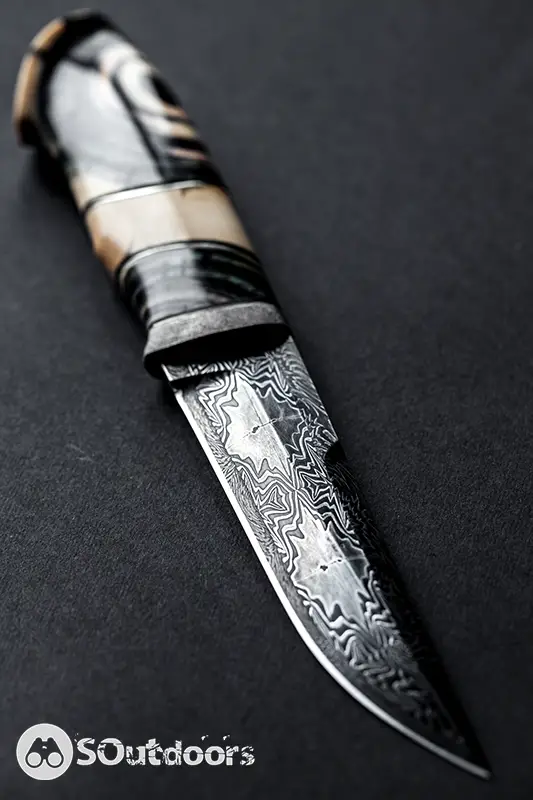
Just like steel, there are a ton of handle materials from synthetic, bone, antler, and wood. Aesthetics and durability are the main differences between handle materials. We all want a knife that looks good but that should be secondary to how well it performs.
Wood handles are the most common and often cheapest option. Wood works well, especially hardwoods, but may get slippery when it gets wet or bloody. Some texturing or contouring helps. Wood does take some care to preserve it.
Bone and antler handles are usually very tough and durable but are worse than wood for getting slick. With a natural or carved texture, these can work very well and require very little maintenance.
Synthetic handles are often best for skinning and butchering tasks. They often have more grip when wet and require the least maintenance. There are dozens of different synthetic handles but most are very similar in their traits. The exception is Micarta that behaves much like wood but requires less care.
5. Fixed or Folding
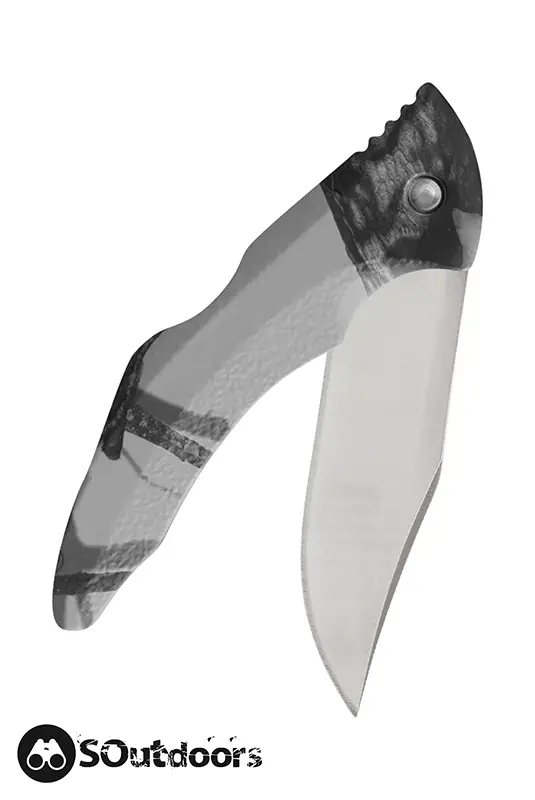
Fixed blade knives are by far the most popular style of hunting knife. They are robust and capable of doing most any task. However, they are large and intrusive. Depending on where you live, there may be legal restrictions on fixed blade knives.
For skinning, they do work well and are even better at butchering. They do camp tasks better and are much harder to damage or break.
Folding knives are often small and light. They are perfect for carrying in a pocket out of the way and have less legal issues than fixed blade knives. Most tasks will take more work with a folding knife and tasks that require more power may be impossible.
I have skinned and processed all fowl and small game animals with a pocket knife and even beaver, coyote, and deer. This is not to say that I wouldn’t have preferred a larger knife but that they are capable.
10 Best Hunting Knives
1. ESEE Knives 4P – Best of the Best Hunting Knife
Designed by the staff at Randall’s Adventure & Training, this knife is a tool made to perform most any task you need. It can skin, butcher, process, and serve as a survival knife if things go downhill. All around, this is one of the best production knives on the market.
Some people may disparage the 1095 high carbon steel but it takes an amazing edge and holds that edge well. A minimum of maintenance will keep it sharp. 1095 is tough enough to take the abuse a knife should be able to take and keep on going.
Similarly, the handle is full tang with linen micarta scales and is damn near indestructible. Micarta doesn’t split like wood and has more wear resistance than plastic handles. The size and shape give you a good grip on the knife and keep it from slipping no matter the task.
The drop point blade rides easily under the skin when processing animals while the flat ground edge stays sharp. There are no complex sharpening setups needed, just a regular stone will do the job perfectly.
The 4” blade is coated with a rust inhibitor but you will still need to care for the cutting edge to prevent rust. Included is a Kydex sheath with several mounting options. If want an amazing knife that will last forever, this the ESEE.
Check Price and Rating on Amazon.com
Pros
- Great quality
- Versatile
- Easy to maintain
- Durable
Cons
- Costly
- Somewhat heavy
2. Cold Steel Recon 1 – Best Folding Knife
Brand new out of the box this is easily the sharpest knife I have ever seen. It’s almost scary sharp! That’s not an unusual trait with cold steel products. They take a lot of pride in making a usable product that will serve you well anywhere you need it.
This may not have been originally designed as a hunting knife but it serves the purpose very, well. The S30V steel is highly durable and holds a keen edge very well. It may take a bit more to sharpen it but you won’t have to sharpen it often.
G10 handles provide a firm grip that doesn’t slide no matter what you get on them. The texture isn’t so aggressive that its uncomfortable but provides the perfect traction. With the added finger grooves, this knife isn’t going anywhere.
The spear point is very underrated in its utility. It rides right under the skin for a perfect cut and can process game far more quickly than most 4” knives. With its patented Tri-Ad lock, its even strong enough for most camp tasks.
With Cold Steel’s DLC coating the blade will remain rust free in most environments and the handles are bomb proof. This is an easy to carry knife that is sharp and up to any task. Made to last a lifetime of hard use doing whatever needs done.

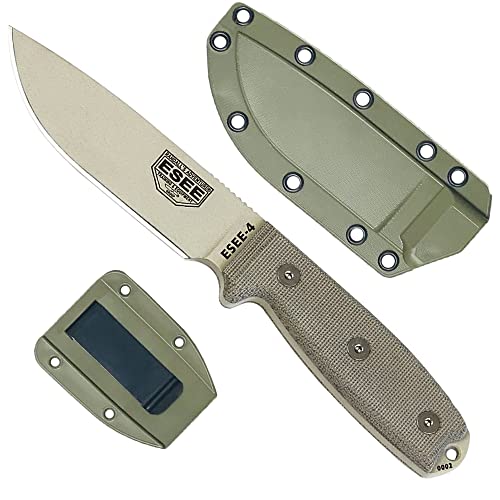









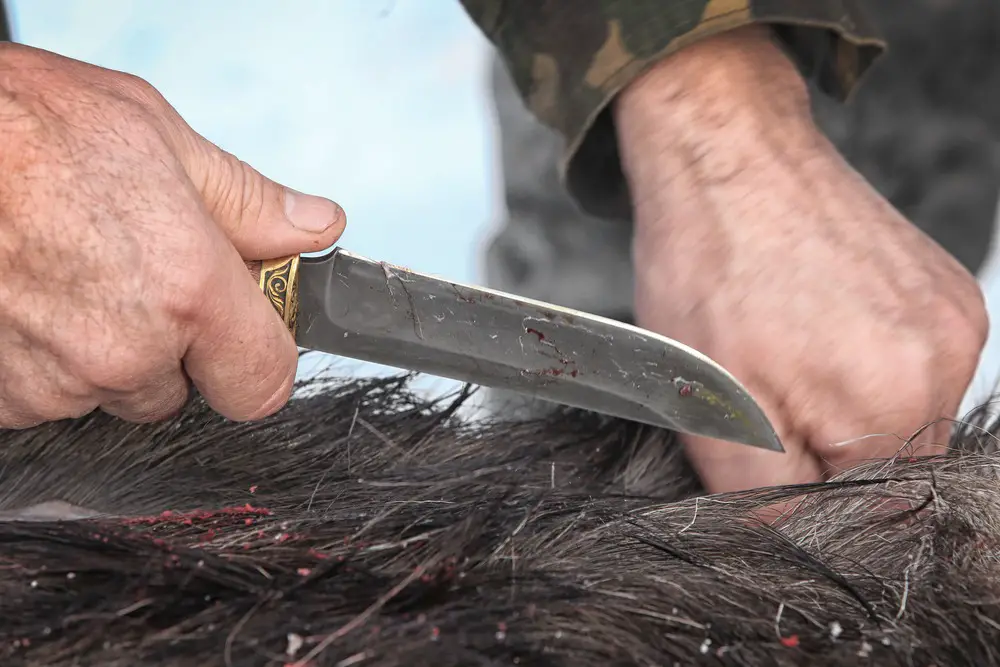
Hello Dear, I am a big fan of your website. I always visited your blog. this post also very informative. I want more update idea about this topic fro 2019.
This topic is not so simple. The best hunting knife is situational. If you draft a list of expectations for your hunting knife needs, the perfect knife may surprise you! As an example, most think of basic field dressing tasks for a hunting knife. Heck, a razor could do that! But what if I need a knife to handle elk on a pack-in trip by foot? It has to be light. The blade long enough to bone out an elk. It must hold an edge, yet be easy to field sharpen if needed. Lastly, it must be able to perform basic camp tasks such as food prep, fire building and in a bad scenario survival. Quite a feat! That’s the perfect hunting knife, I’ve been searching for. Plus I have to like it, looks and feel. Basically it’s going to have to be a fixed blade with a blade length of 4.5 to 6 inches. A good steel choice would be S35VN. A 5 inch blade would be a good compromise. I’m going nuts choosing because I love so many knives! And, like a Nut have gone through many. 20+ selling most and am down to 4. Here they are… Buck 119 Special Pro 6 inch in S35VN. White River Fire Craft FC5, S35VN 5 inch Blade. Knives Of Alaska Magnum Hunter D2 4.5 inch blade. Benchmade Anonymous Cruwear 5 inch blade. So far I think the Benchmade is at the top of the list. It’s light, has a just right 5 inch tough thin blade, with precise tip and a bit of a belly, with long enough handle. It should hold a great edge and I read hones up well. That I must see. No it’s not S35VN, my first choice, but the Anonymous just seems like a good do most compromise big game hunting/camp knife. There are so many other choices custom and commercial and the Buck 119 Pro is my second choice currently. Of course I carry a back-up folder and that choice is another topic!